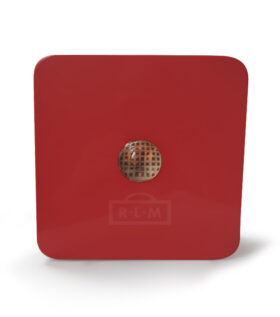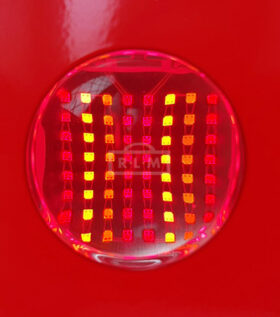Acne Light Therapy
Light affects energy production in all cells of the body, especially the skin.
It increases energy metabolism and has been proven to help with a variety of skin conditions – acne is among them.
Benefits
- Significant reduction in frequency and severity of acne
- Reduced pore size
- Skin heals much faster
- Reduced inflammation
- Helps prevent & treat acne scars
- No hormonal side effects
- Non-invasive
- Can be applied at home
Why does light help acne?
Most people who have tried will agree that natural sunlight seems to have a beneficial effect on their skin and reduces severity of spots. Why does this happen?
Sunlight itself contains a wide spectrum of light, parts of which are beneficial and other parts which are harmful. We know that:
- Ultraviolet light (UVA & UVB), at wavelength 280nm – 400nm for example, can harm and prematurely age skin and even cause skin melanomas and worsen skin conditions. It can also sterilise the skin of bacteria, not to mention helps us to produce vitamin D and perhaps other healthy hormones.
- Pure blue light at a wavelength of 415 nm can kill a range of bacteria including Propionibacterium Acnes, the main microorganism linked to acne. While not beneficial for skin health directly, blue light doesn’t harm us like excess ultraviolet will. It is used by some dermatologists and patients looking for a solution to acne, although we do not recommend it for any type of skin treatment, especially on the face. Blue light is linked directly to eye damage, but also potential DNA damage in cells anywhere on the body.
- Red light at 620nm and 670nm is also proven to kill a wide range of bacteria, again including Propionibacterium acnes, however the key difference over blue light is that red light is directly beneficial for our own skin health, soothing inflammation and helping with energy generation and oxidative metabolism. Essentially it harms acne bacteria while protecting our skin at the same time.
How does red light kill the acne-causing bacteria?
Acne causing bacteria have a weak link in their metabolism – a chemical called porphyrin.
This naturally produced chemical is sensitive to blue, red and other visible light, which energises it, sending it on a destructive path around the bacteria cell.
This activated porphyrin ultimately kills the bacteria (by creating singlet oxygen which combines with cell parts – destroying them), without harming the skin.
What type of light is optimal?
- Every light therapy device for acne treatment on the market should contain red light, which is safe and highly effective.
- A superior device must contain red light of high strength – which helps in killing the bacteria, whilst also protecting and energising the skin cells. Higher strengths of red light will also more quickly reduce the inflammation associated with acne, leading to faster healing and less chance of scars.
- Porphyrin in acne bacteria is most sensitive to wavelengths in the 400-430nm range, however blue light like this does not penetrate deeply into the skin. Deeper bacteria in pores or behind blackheads will be largely untouched by light from some devices. Near infrared light is something to consider for deeper acne because the near infrared wavelengths of light still activate porphyrin (albeit to a lesser degree than blue/red) whilst also being able to penetrate deeper into the skin.



Can we uses near infrared LED 850nm on scalp for hair growth ??? LLLT always uses 650 nm for hair growth , why not near infrared ?
Do you have any info regarding this ? If you any links to the related articles, please share.
Hey there,
There are animal studies pointing to near infrared being better for hair growth, but it might just be down to the better penetration of that over red, and the dose. With a low dose of infrared light, a greater proportion of it would penetrate down to the hair follicle relative to red.
LLLT doesn’t always use 650nm red light for hair growth, it’s just a few initial studies used that wavelength and everyone got excited, without any direct comparisons to other wavelengths. There’s no reason to believe it is somehow a magical wavelength for hair growth, and every reason to believe it would be worse than 620nm or 670nm.
Hi Joe,
Thanks for the reply. So you mean we can use near infrared LED (~850 nm) on scalp for hair growth ??? without any side effect ?
Because on of my friend had used 850nm LED on the scalp & he reported slow & less hair growth. not sure if it stops hair growth or promotes hair growth.
Hey Radha,
Yeah sure. All light between 600-900nm works on that same mechanism of improving energy production in cells. 850nm LEDs definitely won’t make your hair fall out. It will be basically as effective as 650nm for hair health, with minor differences.
If your friend is getting side effects from LED light, I would first check the EMFs (and make sure the device is earthed) and then check the heat coming from the device. I would also make sure to know the power density of the light, so you can calculate a reasonable dose and not overstimulate the scalp.
Hi,
I have had mild acne and rosacea in my face for some time and would like to know more about the device you mention in the text above. I was interested in buying the it but noticed that it’s no longer available in your shop, how come? Can I get it somewhere else or do you recommend a different device instead?
Thanks.
https://redlightman.com/product/red-light-device/
https://redlightman.com/product/red-light-device-mini/
These will be suitable. The blue-red light we used to sell just wasn’t popular. Red-only lights are still effective for acne and have less side effects so you can use them too.
Hey Joe (great song btw), I have a couple of questions for you if you don’t mind. I’m looking for a multiple purpose lamp.
– Which lamp would you recommend for treatment of acne, hair loss, hypothyroidism, oral health and testicles(hormones)? Preferably a mini lamp, as finances are a factor for me, unless the bigger lamps are superior in quality and effect? (any specific wave length?)
– How do your lamps/bulbs differ from the cheaper options on Amazon?
– I’m on the fence about light therapy as I tried it once with a 150W brooder lamp without any real results. I’m aware that you are using very different technology, and I guess I’m just looking for some assurance of your products. Are brooder lamps useless (except for relaxing heat exposure)?
Cheers
So does 850nm light help acne or only the 660 band?
850nm / 660nm are not the ideal wavelengths, but yes, the near infrared around 810-830nm is still good for acne like the 670nm red light is.
The studies I have seen show slightly better results with the red compared to near infrared, but I don’t know if that is conclusive necessarily. They are both good.
Which of your lamps do you recommend for helping with idiopathic peripheral neuropathy (cause cannot be identified)?
Infrared has been shown to help with this condition.
You mention “Near infrared light is something to consider for deeper acne because the near infrared wavelengths of light still activate porphyrin (albeit to a lesser degree than blue/red) whilst also being able to penetrate deeper into the skin”. Can you tell me what devise you would recommend for deeper acne? Thank you.
Hello,
Can red light help treat rosacea sufferers? If so, what is the ideal wavelength?
Thank you,
Regina
There is some research into rosacea with red light and near infrared light. I have seen wavelengths from 590-635, 660-680, and 810-830nm being studied and they all seem useful. The research points to a light intensity of 20-50mW/cm2 being best, used for a couple of minutes. Most skin studies where they are comparing red vs near infrared slightly favour the red light.
Hello. I have a skin condition called Hidradenitis and it affects my armpit and groin area with painful swollen boil type flare ups. Would red light therapy be affective in treating this? Please advise. Thank you.
The red light device has completely healed my adult acne. I’ve spent thousands of pounds on skin peels and skincare products over the years and this is the only thing that has worked for me. I only use it for only 2 minutes a day! Could not recommend enough.
After using if for a month, I barely get spots anymore and when I do they are small and heal fast. My blackheads are slowly disappearing and my pores are getting smaller and tighter. I use it on my décolleté which helps to heal my heat rash faster. I’ve also had blocked pores in my underarms and those have shrunk and disappeared. The red light has been a life changer for me. Thank you red light man!
Can I please ask what light you purchased ? Thank you
Hi there , I have a 19 year old daughter that suffers from acne on her cheeks, they appear to look like a normal acne but gets really red inflamed and then looks dry just wondering what light you would recommend? Kind regards concerned Mum
Any red light should be fine for acne. 670nm is favoured.
Hi,
we have bought the Infrared Bodylight 830 a while ago. I wanted to know if this device is recommended for acne and acne scarring or do you recommend another device to be better for acne? Also, for acne, is it best to stand close or better to stand further away?
Hi,
I am using the medium device with Red-Infrared Combo Light for skin improvement. Currently using it at 100 mW/cm² (roughly 20-25 cm away from the face). When I calculated the dosage with the universal dosage calculater it adviced me to only use it for 1 minute to get around 6 Joule… is this really enough? I am thinking mainly if there is skin reflection which might lower the dose I am actually getting..